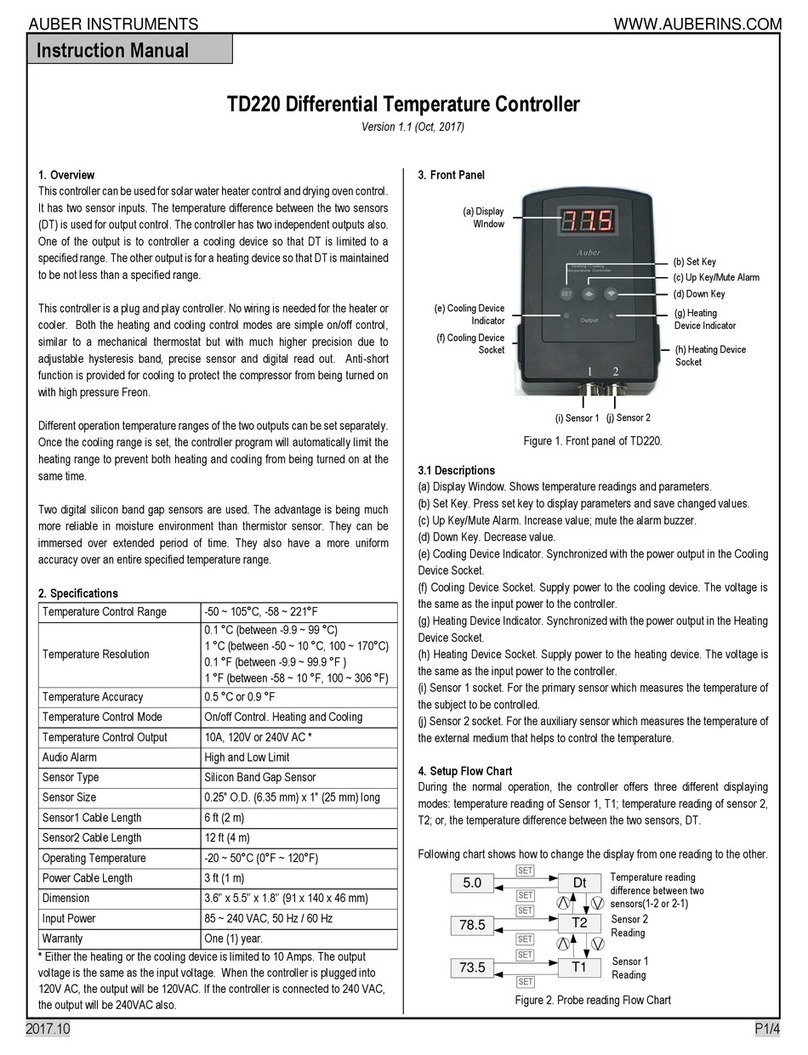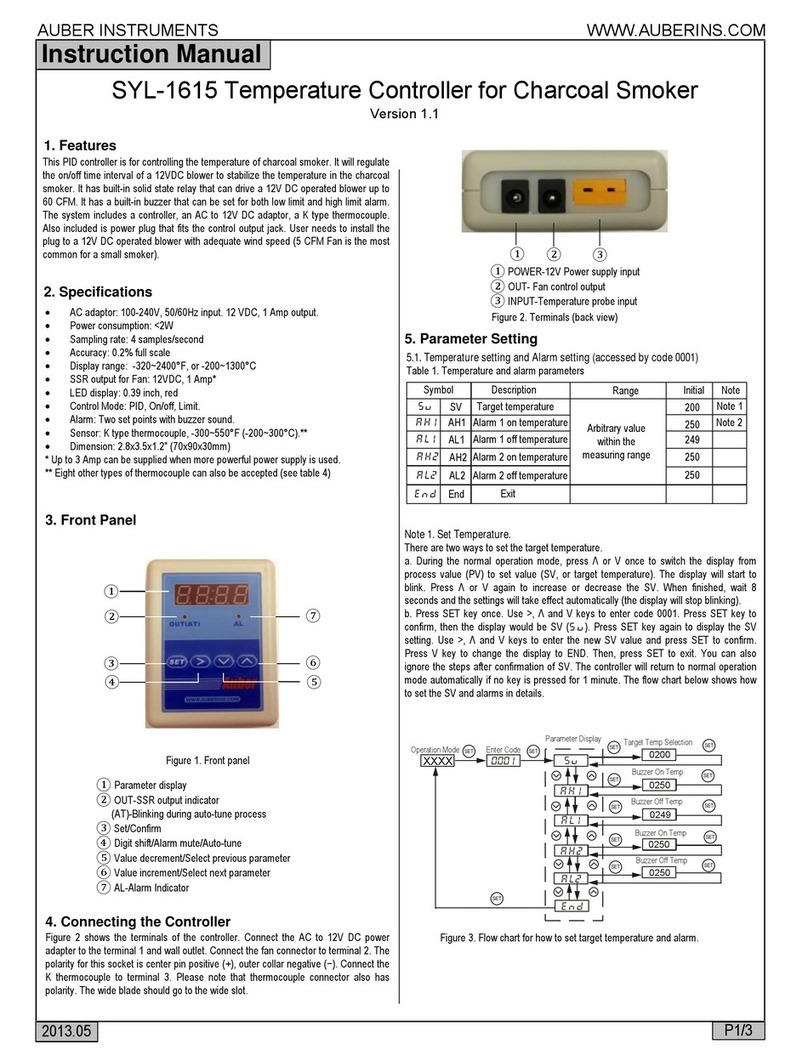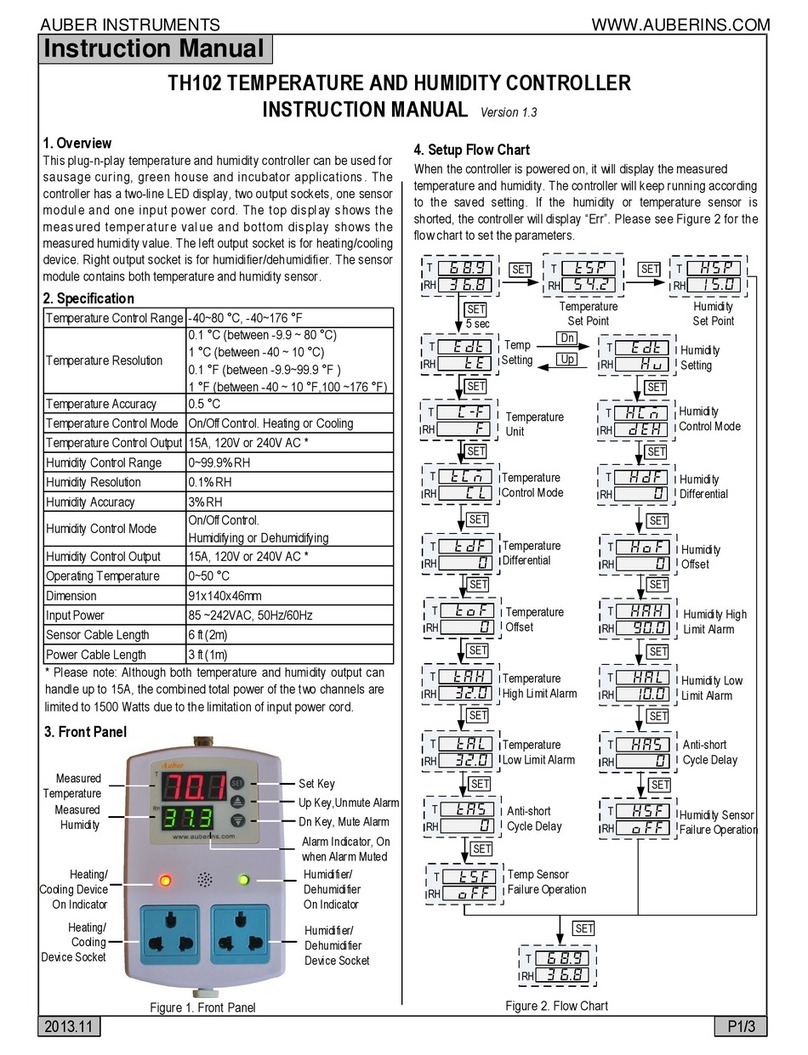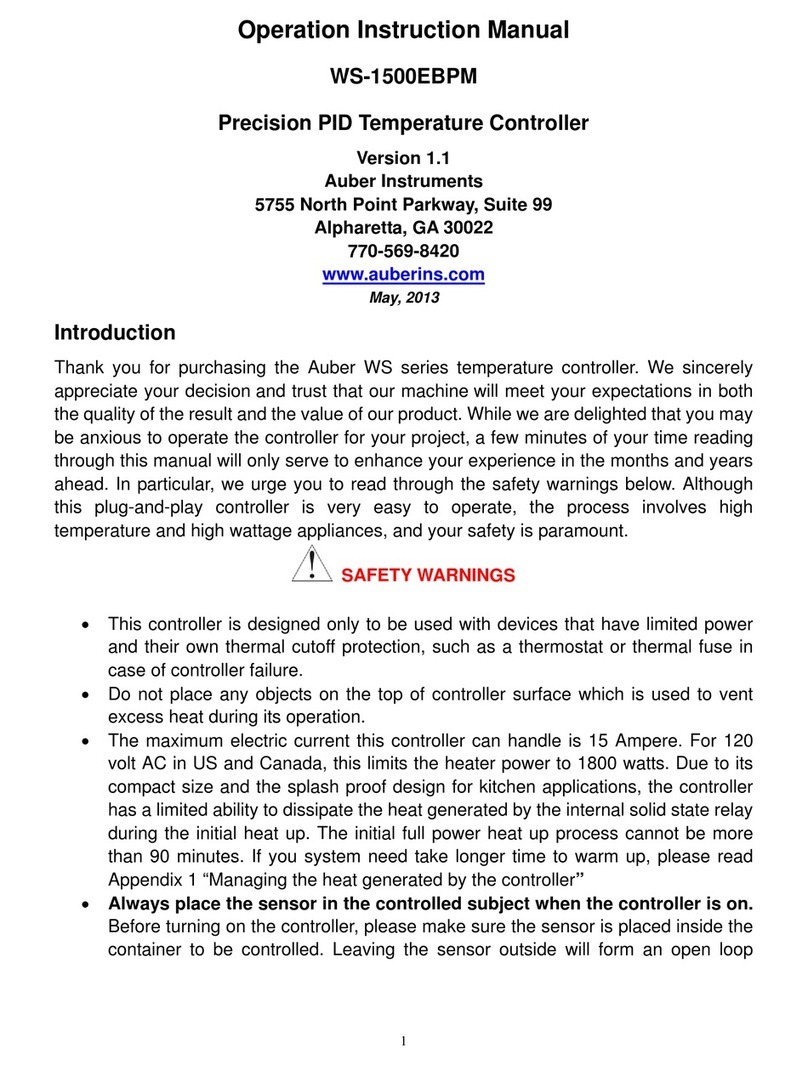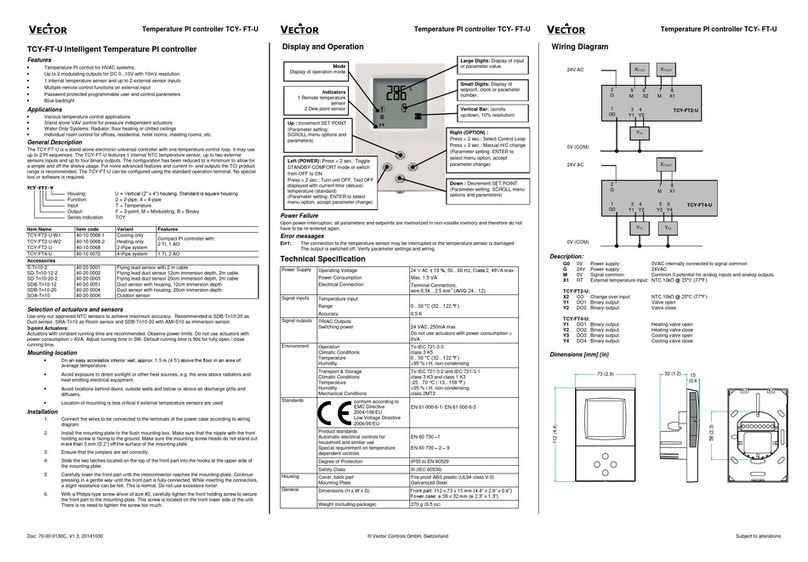
10
show the actual time passed since the controller was last powered up. Please note that
this is the total time, not the time that has passed in the current step. Pressing the Time
key again will switch the display to the internal temperature.
5. Tuning the controller
This controller contains two sets of system parameters that can be changed for different
applications. This controller is shipped with the system parameters set for the Bradley
Smoker. The user should not change these parameters. However, if you feel that
performance is not ideal, you can try to manually tune the system or run the auto-tune
again. For detailed information on how to tune the controller, please read the section 7
and 8 of the main manual.
6. Important consideration for better control results.
The following is a list of things that could affect the results of temperature control.
a) The smoker and controller location. The smoker should not be placed directly in the
sun. Direct sun light can heat the smoker to above 140 °F in the summer time, making
controlling the temperature at 140 °F impossible. This is especially the problem for the
Bradley Original Smoker because of its black color. The controller should be placed
away from direct sun light also. Although the controller uses a high intensity LED display,
it will still be difficult to read when sun light is directly shined to its surface. Users should
also avoid exposing the controller to water and rain, which could damage the controller.
b) Low temperature control. The control result for temperatures below 125 °F will not be
as accurate as for higher temperatures when the smoker generator is on. This is
because there are two heaters in the smoker tower. One is the smoker heater controlled
by the PID controller. The other is the heater from the generator that is not controlled.
Our test shows that the heater in the generator itself can raise the temperature of the
smoker tower by 60 °F (2 hours, in the shade with damper open). That means when the
ambient temperature is at 70 °F, the smoker can be heat up to 130 °F in 2 hours by the
heater of the generator (without using the heater in the smoker).
c) Damper position. Keeping the damper open will result in better temperature stability
because more heat loss is created. This is important when the temperature is set below
140 °F. When the damper is closed, the temperature will take longer time to drop if it is
overshot during initial heat up. At higher temperatures, closing the damper will not affect
the performance much because the heat loss from the walls of the tower is increased.
Closing the damper at high temperature will keep the moisture of the food.
d) Temperature uniformity of the smoker tower. Our test shows that when all the shelves
were empty, the temperature inside the smoker tower was fairly uniform except the back

